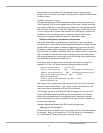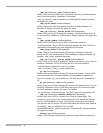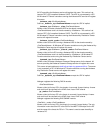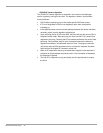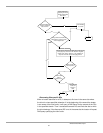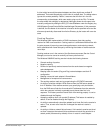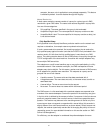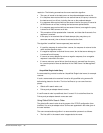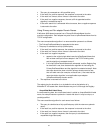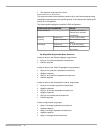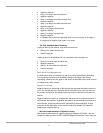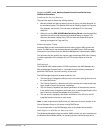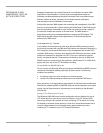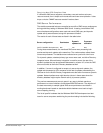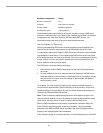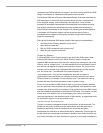
• The query is processed as a fully-qualified query.
• If the result is a positive response, the response is returned to the caller.
• If the result is a timeout, then a timeout is returned to the caller.
• If the result is a negative response, the next suffix is appended and the
algorithm is restarted at step 2.
• If the suffix search list is exhausted without success, then a negative response
is returned to the caller.
Using Primary and Per-adapter Domain Names
A Windows 2000-based computer has a PrimaryDnsDomainName from the
machine configuration. Each adapter may also have an IpDnsDomainName from its
TCP/IP configuration.
The name concatenation algorithm in a name resolution process is as follows:
1. The PrimaryDnsDomainName is appended to the name.
2. The query is submitted as a fully-qualified query
• If the result is a positive response, the response is returned to the client.
• If the result is a timeout, then a timeout is returned to the client.
• If the result is a negative response:
• append to the original single-label name the IpDnsDomainName that
has not been used yet from an adapter in the TCP/IP binding order,
and the algorithm is restarted at step 2.
• if all unique IpDnsDomainNames are exhausted, and the Registry flag
for devolution is set, then the devolution algorithm is tried using the
PrimaryDnsDomainName and the algorithm is restarted at step 2. Note
that name devolution does not shrink primary domain name to less
than a 2-label name (for example, microsoft.com.). Also note that the
name devolution algorithm is not applicable to per-adapter
(IpDnsDomainName) domain names.
• The response is returned to the client.
The registry key for devolution is on by default to mirror the behavior of a
Windows NT 4.0-based client. Administrators may turn it off through the Registry.
Unqualified Multi-Label Query
A name containing dots, but not dot-terminated, is called an Unqualified Multi-Label
name, for example ntserver.mydomain. A name with dots in it may be unique, or
partially qualified.
The name resolution algorithm for such names is as follows:
• The query is submitted as a fully-qualified query (with the ntserver.mydomain.
name).
• If the result is a positive response, the response is returned to the client.
• If the result is a timeout, then a timeout is returned to the client.
• If the result is a negative response, then the query is submitted as an
unqualified single-label query.
Windows 2000 White Paper
39



